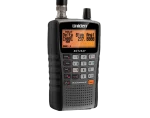From 10-Codes to Plain Speech: The Evolution of Police Communication
Police communication has always been a vital component of effective law enforcement, ensuring officers coordinate and respond swiftly to incidents. For decades, 10-codes—a system of numerical shorthand—served as the backbone of police radio traffic. However, a shift toward plain language communication has been gaining traction in recent years. What prompted this evolution, and what are the implications for public safety? Let’s explore the history, reasons, and impact of this significant change.
The History of Police 10-Codes
The origins of police 10-codes trace back to the 1930s and 1940s, when law enforcement needed a concise way to communicate over radio systems with limited bandwidth. The codes were developed to save time and reduce miscommunication during transmissions.
- What Are 10-Codes?
10-codes consist of the number “10” followed by another number to convey a specific meaning. For instance:- 10-4: Acknowledgment or “Okay.”
- 10-20: Location.
- 10-33: Emergency or urgent assistance required.
This system became widely adopted across law enforcement agencies, but there was no universal standard. Different jurisdictions developed their own versions, leading to variations in code meanings.
The Challenges of 10-Codes
While 10-codes offered brevity and clarity within individual departments, they presented challenges when agencies needed to collaborate.
- Lack of Standardization:
- A 10-code in one jurisdiction might have a completely different meaning in another. For example, 10-13 might mean “officer needs assistance” in one area and “weather report” in another.
- Barriers to Interoperability:
- During large-scale emergencies, such as hurricanes or terrorist attacks, first responders from various jurisdictions often need to work together. Differences in 10-code meanings can lead to confusion, delays, and errors.
- Evolving Communication Needs:
- As radio technology improved, the need for brevity decreased. Simultaneously, public safety priorities shifted toward ensuring clarity and inclusivity.
The Push for Plain Speech
Following the 9/11 terrorist attacks, interoperability between agencies became a critical focus for public safety organizations. The federal government, through initiatives like the National Incident Management System (NIMS), began encouraging the use of plain language in public safety communications.
What Is Plain Speech?
Plain speech involves replacing coded phrases with clear, straightforward language that everyone can understand. For example:
- Instead of 10-4, officers might simply say, “Acknowledged.”
- Instead of 10-20, they might say, “What’s your location?”
Reasons for Adopting Plain Speech:
- Improved Interoperability:
- During multi-agency responses, clear communication reduces misunderstandings and ensures faster coordination.
- Increased Clarity:
- Plain speech eliminates the guesswork associated with deciphering codes, especially for officers or responders new to a jurisdiction.
- Transparency with the Public:
- In an era where police communications are often monitored by the media or the public, plain language promotes understanding and builds trust.
- Adaptability for Technology:
- Modern radio systems and dispatch centers often integrate with digital tools, making plain language easier to process and record accurately.
Adoption and Resistance
Despite the benefits, the transition to plain speech hasn’t been universally embraced.
Agencies Supporting Plain Speech:
- Many federal and state agencies have adopted plain language policies, particularly for large-scale incident management.
- Fire departments, EMS, and other public safety organizations have also embraced the shift, fostering better inter-agency collaboration.
Resistance to Change:
- Tradition: Some officers are deeply accustomed to 10-codes and see them as an integral part of police culture.
- Efficiency: Critics argue that plain speech can be less concise, especially in high-stress situations where time is critical.
- Training and Transition Costs: Switching to plain language requires retraining personnel and updating protocols, which can be resource-intensive.
The Impact on Public Safety
The move to plain speech has had both immediate and long-term effects on public safety communication:
- Faster Emergency Response:
- During large-scale disasters, plain language helps responders from different agencies coordinate more effectively.
- Reduced Errors:
- By removing ambiguous codes, plain speech minimizes the risk of miscommunication, particularly in high-pressure situations.
- Greater Public Understanding:
- With more transparent communication, the public can better understand critical updates during emergencies.
- Cultural Shifts:
- The transition has sparked discussions about modernizing other aspects of law enforcement communication and operations.
The Future of Police Communication
The debate over 10-codes versus plain speech reflects broader changes in policing and public safety. While many agencies have adopted plain language policies, others continue to use 10-codes, blending tradition with modernization.
As technology advances, new tools like encrypted digital radio systems, GPS integration, and artificial intelligence may further reshape how officers communicate. Regardless of the medium, the goal remains the same: ensuring that information is shared quickly, accurately, and effectively to protect lives and property.
Conclusion
The shift from 10-codes to plain speech represents more than a change in terminology—it reflects the evolving needs of modern law enforcement. By prioritizing clarity, collaboration, and public trust, plain language communication ensures that agencies can respond effectively to the challenges of the 21st century.
Whether you’re a police officer, a first responder, or simply a curious citizen, understanding this evolution highlights the critical role of communication in maintaining public safety.


